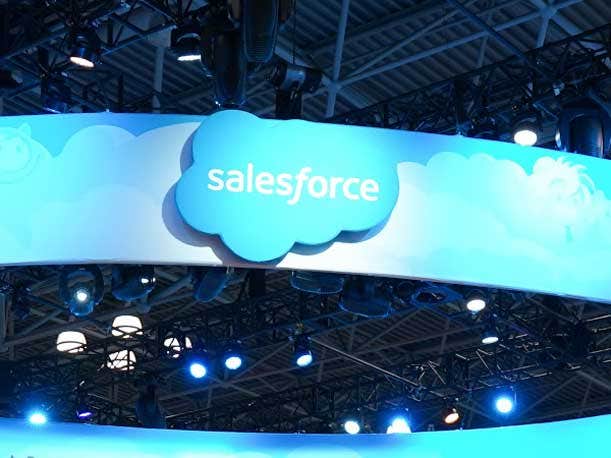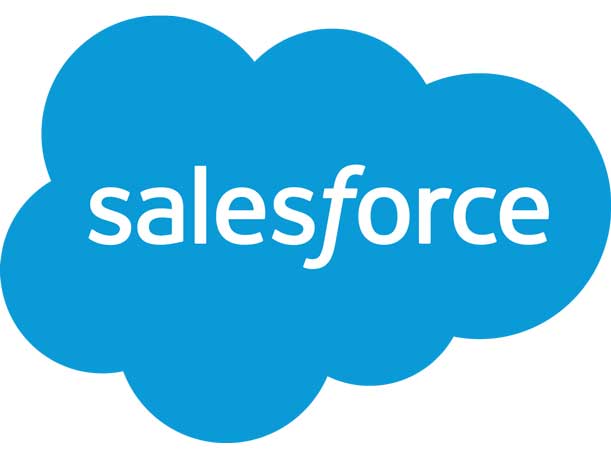Salesforce Q3 2023 Earnings Preview: 5 Things To Know
This is the first Salesforce quarterly earnings report since the vendor’s September Dreamforce event.

An update on customer interest in generative artificial intelligence, the future of Salesforce GenAI and where Slack is headed are among the potential topics to come up during Salesforce’s quarterly earnings report Wednesday.
The report will cover the San Francisco-based customer relationship management (CRM) platform vendor’s third quarter (ended Oct. 31) of its 2024 fiscal year.
Salesforce has more than 11,000 partners worldwide, according to the vendor, meaning that analysts could ask about the role of MSPs and consultants in bringing new and familiar Salesforce wares to market during the call.
[RELATED: Salesforce Dreamforce 2023: CEO Says Other AI Vendors Use ‘Your Data To Make Money’]
Salesforce Q3 Earnings Preview
This is the first Salesforce quarterly earnings report since the vendor’s September Dreamforce event in which Salesforce positioned itself as a competitive force in the growing GenAI market dominated at the moment by Microsoft and Google.
Here’s more of what to expect Wednesday on the Salesforce earnings call.

Salesforce GenAI Activity
Analysts on the Salesforce earnings call this week will no doubt have plenty of questions on the adoption of Salesforce’s GenAI offerings and how they compare to rivals such as Microsoft, Google and IBM.
A November report from investment bank KeyBanc said that Salesforce’s Data Cloud, AI and GenAI offerings have “not necessarily generated AI sales,” but they have “driven other products including Slack and MuleSoft.”
“Partners are still building out their Data Cloud AI capabilities, with demand pickup expected in 2H25,” according to the KeyBanc report. “Salesforce continues to push to move customer data into the data cloud to enable AI.”
Customer budgets for calendar year 2024 look “uncertain,” according to the KeyBanc report. But the firm expects “a weak 1H with a pickup in 2H driven by the convergence of a macro recovery and readiness of datacloud/AI.”
Morgan Stanley said in a November report that “partners view Data Cloud as a key component of Salesforce’s vision for bringing Generative AI capabilities to the product suite, so we are looking to an acceleration in uptake of Data Cloud for early signals of customer preparations for adopting Salesforce GenAI solutions down the line.”
In a separate November report, Morgan Stanley said that checks with Salesforce channel partners showed “signs of stability, while recent price increases are yielding expansions on both new and renewal contracts.”
The firm also believes that “despite recent hiring trends and incremental investments needed to bolster the company’s pipeline of Generative AI products,” Salesforce should meet its 30 percent operating margin target for fiscal year 2024 “given cost efficiencies of re-allocating expenses away from less valuable investments.”
An October report from KeyBanc noted that Salesforce is monetizing its AI offerings “through add-on modules like Sales and Service GPT included within Einstein 1 Sales and Service, and increasingly we expect through multi-cloud tiers providing packaged genAI solutions leveraging underlying cross-cloud customer data.”
AI pricing “needs to balance subscription that gives customers visibility with consumption pricing that protects variable costs,” according to the report.
In its report, Morgan Stanley said it does not expect “clarity around Data Cloud & Einstein 1 consumption pricing” on the call. It also expects fiscal year 2025 revenue estimates on the following earnings call due to uncertainty in the macroeconomy.

More Salesforce Channel Check Results
A November report from KeyBanc revealed that “softer” check from Salesforce solution provider partners, resulting in lowered estimates for revenue and current remaining performance obligation (cRPO). Feedback from channel partners “worsened from 2Q24 checks.”
“All we spoke to missed their F3Q24 quarterly services targets,” according to the KeyBanc report. “New deals scarce, transformation projects pushed out, cycles elongated. One said Dreamforce did not generate the hoped for demand uplift despite Einstein 1 and data integration announcements. One did note improvement in the cost & spend optimization trends.”
The partners told KeyBanc that services weakened quarter over quarter “across most verticals with new deals/new logos and large transformation projects remaining on hold.” And “most partners did indicate, however, that influenced license sales were more in line with expectations, with traction around Unlimited tiers and upsell driven by the recent price increase.”
As for Data Cloud and AI, “no traction yet, but discussions around it driving cross-sell,” according to the KeyBanc report.
Still, the firm expects “an overall in-line F3Q but see some risk around the F4Q guide and particularly cRPO as an indicator for FY25,” according to the report. KeyBanc expects fiscal year 2025 to 2026 revenue growth of about 11 percent, the same for fiscal year 2024 to 2025 cRPO growth.
The November report from Morgan Stanley, meanwhile, resulted in “stable checks,” with “partners citing price increases effectively being realized stand in contrast with investor concerns of a single-digit FQ4 cRPO guide.”
“Industries and MuleSoft performance sound strong in checks, while commentary around Service, Marketing, Commerce remains mixed,” according to the Morgan Stanley report. The firm saw “no signs of a materially worsening of demand in our checks.”
Partners told Morgan Stanley they continue to see the same “additional approval layers in the deal process, delayed buying patterns, and extended sales cycles” experienced over the past year. They called this a “new normal” and said “few other vendors seeing a return to sales cycles observed in 2021,” according to the report.
“On the positive side, we heard of limited incremental deterioration in Salesforce partner practices, with the majority of partners we spoke with this quarter performing inline-to-slightly above plan during Salesforce’s FQ3,” according to the report.

Salesforce Multi-Cloud Strategy
Salesforce executives will likely update analysts on the call on its ongoing strategy to get customers to adopt multiple cloud offerings from the vendor.
KeyBanc said in an October report that it is “positively impressed by Salesforce’s focus on driving increased multi-cloud sales,” although Salesforce reiterated “that most customers currently use just one or two of their clouds.” The report was based on a meeting with Bill Patterson, who was Salesforce executive vice president and general manager of CRM applications at the time and was promoted in November to EVP of corporate strategy.
“As an enabler for multi-cloud integration, management underscored improvements in the underlying cross-cloud data cloud/Einstein1 Platform infrastructure, whose progress from ‘Customer 360’ to CDP to Genie to Data Cloud we noted as a key theme this year at Dreamforce,” according to the report. “Beyond product integration, we expect the company to extend multi-cloud packaging initiatives like the recently announced Unlimited+ tier with additional multi-cloud tiered pricing, with both these product and GTM multi-cloud initiatives progressing over the next 12 months.”
Salesforce’s push toward multi-cloud adoption could help it out as customers look to consolidate to fewer vendors, according to the report. Salesforce even sees vendor consolidation “reaccelerating post a lull with macro.”

New Slack CEO
Salesforce co-founder and CEO Marc Benioff likes to hand the mic to promoted executives on company earnings calls, so recently appointed Slack CEO Denise Dresser (pictured) may have some time to talk about her vision for the communications platform.
Although Salesforce partners have given CRN a mixed take on Slack in past interviews – with some partners seeing sales to customers and others not – a more streamlined partner program could lead to more emphasis on partners in Slack’s go-to-market in 2024.
Dresser took over the role earlier this month, succeeding Lidiane Jones, who will become CEO of dating app Bumble, according to a LinkedIn post. Jones became Slack’s CEO in December 2022.
Dresser has been with Salesforce for more than 12 years, most recently holding the title of president of accelerated industries, according to her LinkedIn account.
Salesforce also notably hired Frank Defesche away from Veeva Systems this month as senior vice president and general manager of life sciences. A Morgan Stanley report called the hiring “an important development, especially considering the push back from some investors on Salesforce’s ability to take on Veeva and compete in Life Sciences.”
Defesche could also make an appearance on this week’s earnings call to talk about his vision for Salesforce in life sciences.

Salesforce Partnerships, Products
Salesforce executives this week could provide more details on the partnership and products strategy going into 2024.
During Amazon Web Services’ re:Invent conference in Las Vegas this week, the two vendors announced an expanded partnership with deeper product integrations across data and AI, plus select Salesforce products finally available on the AWS Marketplace, according to a joint statement.
Earlier this month, Salesforce and Accenture announced a partnership around life sciences, with new innovations, assets and accelerators powered by data and AI, according to a joint statement.
On the product front, Einstein Copilot and Copilot Builder are set to become generally available sometime between December and February, according to an online Salesforce product roadmap.
Active pilots include Einstein Search for Knowledge (ES4K), which aims to help resolve cases faster, and Einstein for Anypoint Code Builder, which promises developers a way to jumpstart integration projects with code generated from natural language prompts.